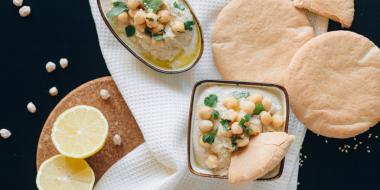Soaking and sprouting pulses at home doesn’t sound like a festive time, but the 68th United Nations (UN) General Assembly actually declared 2016 the International Year of Pulses. Is that a celebration of your racing heart at the thought of sprouting at home? No! In this case, pulses are something else entirely — but you might still feel some excitement about them!
Sprouting Nutrition
The term "pulse” simply refers to a dried seed from the legume family. Dried peas, edible beans, lentils, and chickpeas are common varieties of pulses.
Pulses are very high in protein and fibre and low in fat. They are very versatile to cook with, extremely affordable, and are very sustainable protein source options. Pulses contain a complex cellular matrix. In their dried form they contain phytic acid, which acts as an anti-nutrient and binds to minerals in the body, impairing mineral absorption. Soaking and sprouting pulses allows the phytase enzymes to break down the stored phytates. This process increases the bioavailability of nutrients.
Easy-to-prepare
If you’re putting pulses in a cooked dish, simply soak them overnight for approximately 6-12 hours. They should be rinsed well and boiled in water until cooked al dente. They are wonderful in curries, stew, soups, and even desserts (check out this recipe for lentil cookies).
If you plan to eat them in their raw state, follow these easy directions for soaking and sprouting pulses:
- Purchase certified organic seeds, grains, or legumes. There are many brands that sell seeds for sprouting which have been tested for germination. Many store brand products will also work just as well. It’s a good idea to test a small batch yourself for germination success before preparing large batches.
- Purchase or make your own sprouting jar. They can be found at most health food stores. I prefer using wide-mouth glass jars that come with a fine-mesh lid. Make your own using mesh, screen material, or cheesecloth screwed under the ring of a canning jar.
- Place two tablespoons of seeds or ½ cup of legumes or grains in your jar. Use three times more water than dried product. Soak overnight or for roughly 8 hours.
- Drain the water from the jar, rinse in fresh lukewarm water, and drain again. Once you’ve thoroughly drained your seeds, prop your jar up on an angle to allow for continued drainage through the mesh. Make sure you drain your sprouts thoroughly — you don’t want them water-logged or they will spoil. If the sprouts look or smell rancid, throw them out and start again.
- Place the jar in an area away from direct sunlight. Repeat the rinsing and draining a minimum of twice a day depending on the weather. If it’s dry and hot, you may need to rinse and drain three times.
- The sprouting period depends on a couple of factors. Sprouting will occur faster in warmer temperatures than in the cold. Sprouting is complete when the tails have grown to a length you deem desirable — usually at least 10mm.
- On the last day of sprouting, place the jar beside a sunny windowsill. The sprout leaves will turn a darker green from chlorophyll.
- Transfer to an airtight container. They will last roughly one week in the fridge.
Soaking and sprouting pulses at home is a great opportunity to boost nutritional content. You can also try a fun seed germination test with your kids to help them get excited about sprouts!






